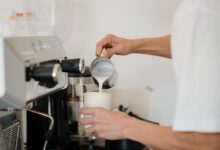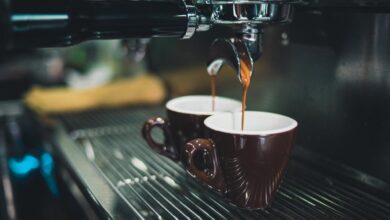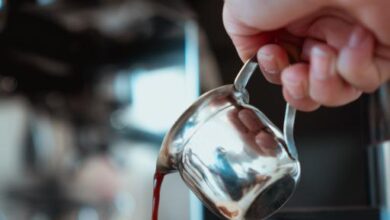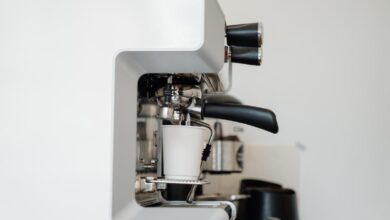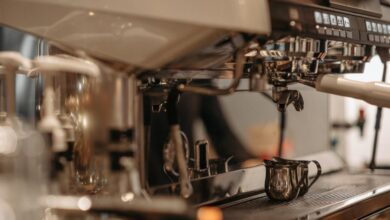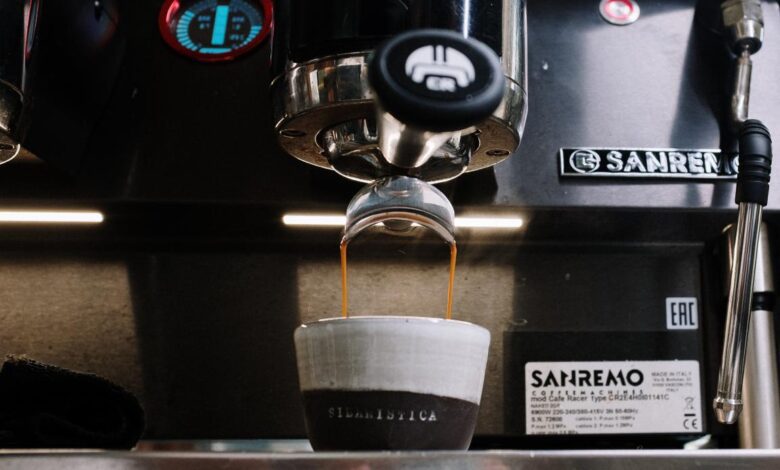
The History of the Espresso Machine
Even though it may seem like espresso has always been made from a machine chances
are that some people think that way just because they know of no other way in which espresso is made. However,
long before there were espresso machines to do our work for us, inhabitants of southern Europe and Milan, Italy, began making espresso as soon as they found out how! It wasn’t until the mid
1940’s that people and coffee shops all over began using espresso machines to make the beverage, at least in the United States that is.
On the other hand, espresso machines were popular in European countries quite awhile before the popularity of these machines came to the United States.
You may be surprised to find out that the first espresso machine in Europe become known some 100 years before they were actually introduced in America.
As the story goes, though, a man named Louis Bernard Babaut invented an espresso machine in the first half of the 19th Century.
He also had a partner named Santais, but he was mainly responsible for the advertising of the espresso machine itself.
But what kind of an espresso machine needs advertised? It would seem like if there was an easier way to make espresso in the early 1800s then people would have naturally flocked to the idea.
Nevertheless, Babaut’s espresso machine was introduced to the world in the beginning of the 19th Century, but as many people could have guessed, the machine was not a perfect machine as no electronic device ever is!
However, this is not to say that Babaut didn’t have success with making espresso. Even though the purpose of the espresso machine, however, was to make espresso in an easier way, the machine still had to be handled by someone who knew what they were doing.
On the whole, though, Babaut was successful and it could spit out espresso beverages just as quick as they could be consumed.
Many people say that his first espresso machine could handle at least one thousand shots of espresso an hour, which is an impressive rate for the first espresso machine built!
Further down the road, though, another espresso machine made it into production and this time Luigi Bezzera was responsible for making it.
He called the invention the “Voila” espresso coffee machine and even though he didn’t get the popularity of the espresso machine off the ground himself, he found a man named Pavoni to do the marketing for him!
If you’re interested in the automatic espresso machine, though, this concept was later introduced in the first half of the 1900s.
An individual known as Illeta actually used compressed air to make the whole espresso-making process faster, which it was able to accomplish successfully!
There you have it: everything you have ever wanted to know about how espresso machines came into production!
They are very popular in the United States and all over the world today, but we must remember that they were introduced by several other avid espresso drinkers just like us!
History Of The Espresso
There is nothing great than sipping a hot cup of coffee in the chilly mornings. It simply feels great having the espresso.
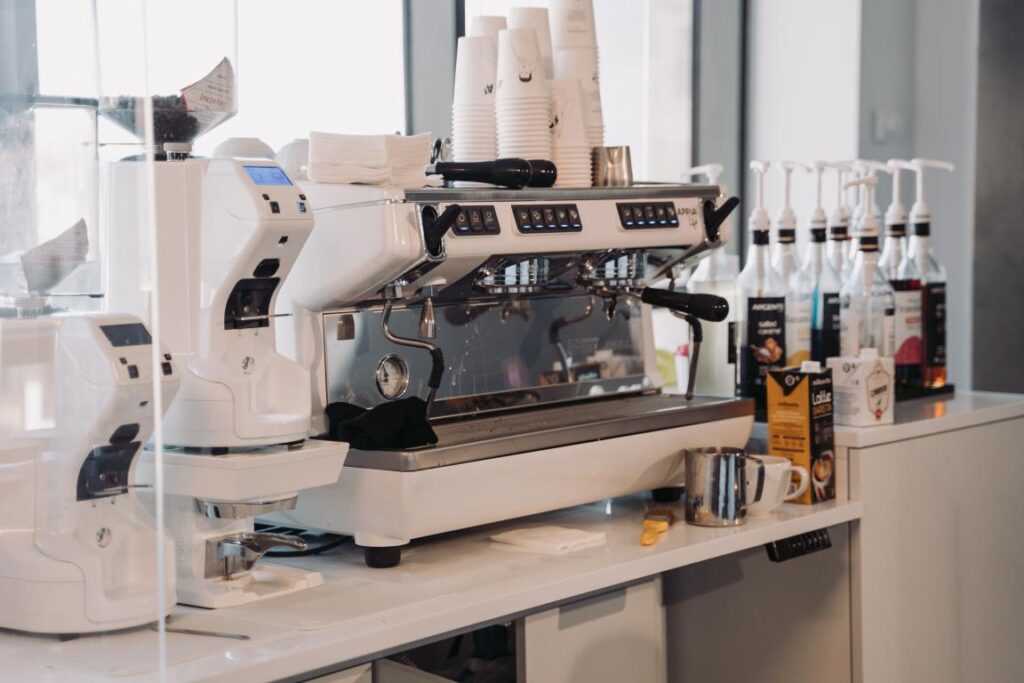
Yes, we are talking espresso, which is one of the most famous and preferred coffee types across the globe. Well, since we started talking about espresso, why not take a brief sneak peek into its history and what exactly it is. What do you say?
Basically espresso is a flavorful and strong coffee beverage prepared when hot water is forced under a high pressure and made to pass through finely ground coffee beans.
The color of the coffee is typically dark brown with brown/red colored foam on the top. Espresso is commonly served in small portions.
Unlike other drip-brewed coffees, espresso is identified with its robust flavor and thick consistency. Following its potency,
straight espresso or espresso served without milk or sweetener is generally considered to be an acquired taste. In the United States,
this espresso is served in small amounts known as shots. Many avid coffee fanatics even order single or double espressos along with a glass of water to void the taste.
Espresso was basically originated in Italy in the 20th century. Indeed Espresso is an Italian word that means fast. A gentleman named Luigi Bezzera made a coffee machine that had four divisions and a boiler in 1901.
He even got the machine patented. This machine used to force boiling water and steam via coffee into the container or cup. This very machine is regarded as the inception of espresso.
In 1903, Desiderio Pavoni purchased the patent from Luigi Bezzera and the Pavoni Compnay started developing coffee machines in 1905 which were based on Luigi’s patent.
The machines produced by the company came to be known as the “La Pavona” and became famous immensely. These machines even reached the America in 1927.
The flaws in these early machines soon came forward. The boiling water and the steam that was forced via machine gave coffee a certain kind of burn flavor.
So, Cremonesi in 1938 built a piston pump that forced hot water rather than boiling water through the coffee. Moreover, this design was also incorporated in Achille Gaggia’s coffee bar.
During the World War II the Gaggia’s small quantity of machines were destroyed by a bomb and any further developments of espresso machines got hindered.
As the war came to the end, Gaggia began manufacturing a viable piston pump. As the machine used the spring lever, it was considered very innovative.
Following the use of the spring lever, the coffee could be pressurized which was entirely independent of the boiler.
These earlier machines used to employ the force of the boiler pressure to force water through the coffee. The coffee that was produced from
this machine characterized a Creama which became the hallmark of espresso coffee. In true terms, this was a major inception of espresso machines.
Further in 1961, M Faema made an improvement in the Gaggia’s machine. Faema developed machine that consisted of an electric pump.
This pump used to force water through the coffee. This machine underlined the inception of pump driven machines which paved way for the modern espresso machines.
How To Make An Espresso?
Coffee drinks are the taste of many tongues. Indeed coffee lovers need coffee anywhere and everywhere— whether at home or at work or for that matter when out for shopping.
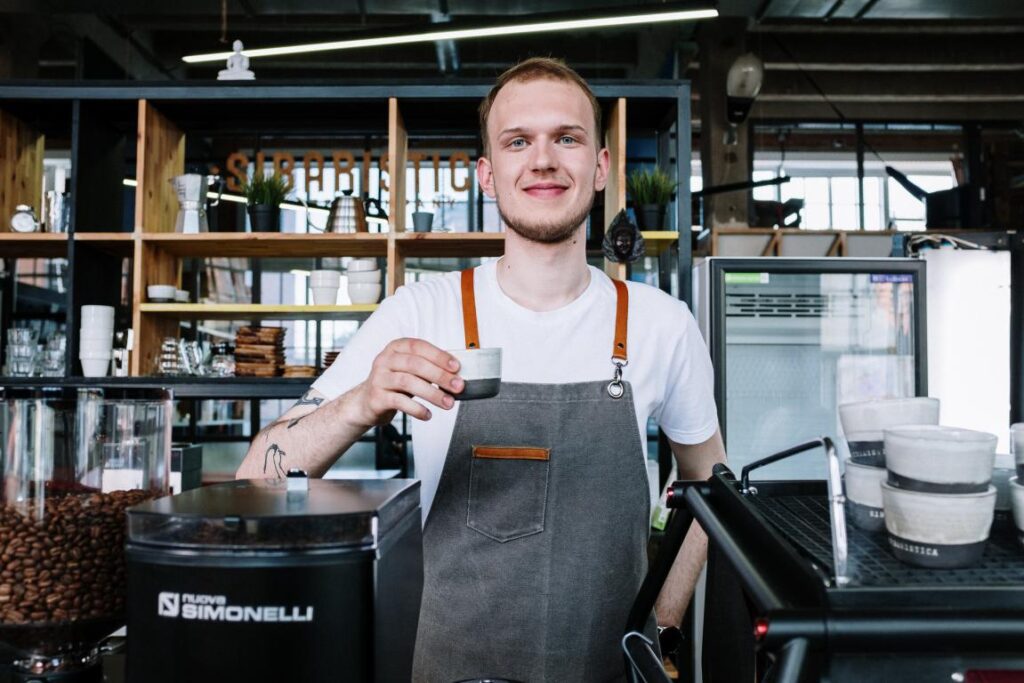
And espresso is among the best flavors of coffees. The credit for their popularity goes much to their easy availability.
Yes, the cup of espresso is easy-to-make (via espresso machine) and too-delicious-to-drink. You can have your favorite sip at a local coffee house.
But if you want a unique flavor, make it yourself. So, wanna learn how to make an espresso? It is too simple, just read on to learn!
Literally “espresso” is an extraction of coffee with high pressure from a special espresso machine. You might need some special
instructions if your type of espresso machine is different from the other types of machines. But, the basics of making an espresso coffee are indeed the same.
Some foolproof instructions to go about
First of all, get a good quality espresso machine. In case, you are a “real” coffee lover, look for the best espresso machine available in the market.
One feature to get in a quality espresso machine is to be sure that it has built-in grinder. I presume you know that the finest grind of beans is the key to make a good coffee.
Take cold and clear water and pour it in your machine’s water chamber. You should make it sure that the boiler cap is secure.
Give one shot of espresso that is a propos one ounce. To give a double shot, you should give two ounces. In few machines you can also give as much as four shots in one go.
Then, place the basket of coffee in filter holder. You can place a little pack in ground coffee. The filter has a measure for the amount of espresso you are preparing.
Brush off the grounds if any on the top or sides of the filter. Place the filter holder inside the espresso machine.
Keep the present glass carafe of your machine under the spout. You should then turn on the machine.
The espresso machine will make the water warm to a proper temperature. Force the water up to the coffee grounds. You can use a cup, if the machine you have doesn’t have a carafe.
The brewing of your espresso should take just 15 or 20 seconds. As the coffee starts flowing in the cup, the foam starts forming on the top.
The foam has a brown color and is known as Crema. As the foam takes an almost white color, your best tasting liquid is not flowing any longer.
It is time to stop now. Remove the cup immediately. Your hot cup of espresso coffee is now in your hands.
A few tips to get the best results
Select and roast the beans particularly for espresso. The beans are available on most of the coffee specialty shops or grocery stores.
To get the best espresso, better buy an espresso grinder. When grinding the beans for espresso, make it sure your grinding machine is efficient enough to give a fine grind.
Use filtered water or bottled spring water. Do not use your tap water if it is hard.
Brewing The Best With A Home Espresso Machine
There are those among us who have an addiction. It’s an all-encompassing fever that holds us hostage until we answer its call.
It’s coffee; and hot or cold, black or light, sweet or bitter, we love it all. But sometimes an ordinary coffee just won’t do.
When espresso is your caffeine fix of choice, it can be inconvenient and pricey to visit to a specialty coffee store every time you need a fix.
For these moments – and for those who want to enjoy espresso at any time – a home espresso machine is the answer.
There are several different definitions of a home espresso machine; they generally fit into three categories.
The manual home espresso machine requires full operator participation; the user adds water and coffee grinds and maintains control over the beverage until it is completely brewed.
The semi-automatic home espresso machine is a combination of user and machine. The user actually starts the machine, the machine takes over to brew the coffee, and the user turns the machine off.
The full automatic home espresso machine requires no operator participation. The machine goes through the entire brewing process from start to finish.
Finding the perfect home espresso machine for you is as easy as visiting your local home goods retailer. There, you will find a variety of machines that vary in components, color, and price.
Online shopping can also be a great alternative for finding that home espresso machine that works best for your space restrictions and lifestyle.
You can also find a variety of consumer reports that can alert you to those brands that have performed well in the marketplace.
A home espresso machine means a new world of coffee self-sufficiency where the lines at the local coffee house need no longer call your name.
Now, the perfect brew can be yours at any time of day, right in the privacy and comfort of your own home.
Finding The Best Espresso Machine For You
You need to know what features are most important on a machine when looking for which espresso machines would best suit your needs.
There are many espresso machines out there, with many manufacturers producing various makes and models. Upscale coffee houses use their wealth of knowledge and what their associates in the business say to discover which espresso machines are the best.
Even they though, need some help when new makes and models are introduced to the market. What should a consumer do? Continue reading to find out.
One feature to look for in an espresso machine is the built-in grinder. These machines tend to have a special grind dial as well to help you the level of coarseness your grind produces.
If you don’t have a built-in grinder, then you will need to calibrate your separate bean grinder machine to correspond with your new espresso machine.
Many of these grinder machines come preset to a certain grind, such as for a French press or automatic drip brewer, which may be too coarse.
It may take several tries, and several shots of espresso before you achieve the grind that’s perfect for your machine.
Espresso experts suggest that two ounces of espresso be pulled between 17 and 23 seconds from a double basket.
If you’re having trouble doing this grind test, bear in mind that good machines should be able to tolerate a variation in the coarseness of grinds.
You can tell which espresso machines are the highest quality because they won’t get clogged by grinds that are slightly too fine or too coarse.
The finest machines have a safety valve that gives the machines a higher tolerance to force water through grinds that require more pressure, such as finer grinds.
The espresso that is produced may not taste as good if the grind is not exact. Industry research has shown that there is an ideal pressure for extraction.
Higher pressures from too-fine grinds can result in the shot taking too long to pull, which will result in espresso
that is too strong and bitter. Grinding the beans too coarse will result in shots that finished too quickly, with a weak flavor and color.
Another thing that can indicate which espresso machines are highest quality is how loud the machine is. Premium brands should be relatively quiet.
The best make of espresso machine is at the decibels of a whisper–in other words, a very low decibel. A good rule of thumb is that
you should be able to carry out a normal volume of conversation while your machine pulls a shot. That way, you can tell all your friends how fantastic your machine is before they taste it for themselves.
coffee machine history,espresso,la pavoni,a coffee maker,coffee house,siphon coffee maker,brew coffee,paragraph about coffee,


